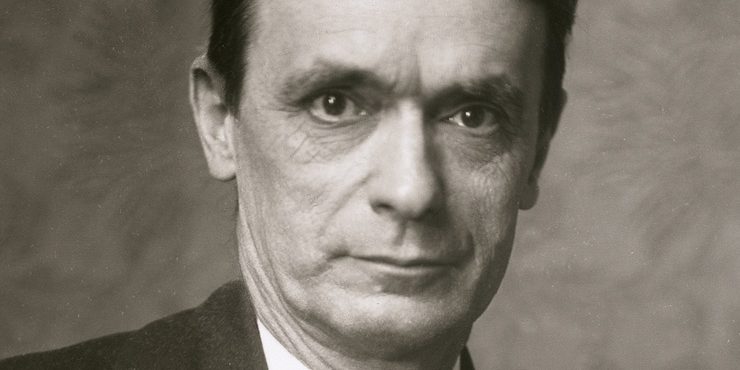
This piece is a follow-up to my last: Valentin Tomberg’s Renunciation of Anthroposophy. And it may be best to begin with that long piece, dear Lector, if you know nothing of Anthroposophy.
Again, though, that piece is very long and perhaps it suffices simply to recall how last time I spoke of:
The Russian Catholic convert Valentin Tomberg (1900 -1973) whose magnum opus Meditations on the Tarot served to liberate me from the New Age movement and led me to the Church.
Whilst this book has nothing to do with fortune telling, my esteem for it may concern certain readers. (If you are such, I recommend that you read here and possibly also here.)
I would also note the following article contains a lot of concepts and vocabulary unfamiliar to many Catholics. But this is necessary for the task I am about to undertake – a task that is not so much directed to faithful Catholics, but people like the man I once was: terribly confused about the issues here and struggling for clarity.
For, alas, my task concerns the fact that a very great deal of dreadful misinformation can be found about Tomberg on the web.
Now, part of this is due to Tomberg’s Anthroposophical background in his youth, before he converted to Catholicism in the early 1940s.
Anthroposophy: the word refers to a spiritual approach developed by the Austrian Rudolf Steiner – in over 350 books – who hoped that Christ would thereby become directly cognisable by modern humanity sans need for the Church. One might consider it a Twentieth Century form of Christian gnosis, although Steiner preferred to call it ‘spiritual science’.
Now, those last two sentences hardly sum up Anthroposophy! But it is impossible to sum up 350 books in two sentences! Yet from these two sentences alone, one can begin to see how problematic Anthroposophy is for the Church. It goes much further! For, speaking very loosely, Steiner’s view of Jesus Christ appears Nestorian. But addressing the vast problems presented by Anthroposophy is far, far beyond our present scope.
Right now, our point is that Valentin Tomberg renounced his youthful Anthroposophical writings—specifically requesting that they not be republished – because he no longer believed in ‘spiritual science’ instead of the Church.
However, Tomberg’s youthful work has been republished and that is one factor among many others – too many to enter into here – that breeds confusion.
Recently experiencing this serious problem, in various corners of my personal life, I also feel it right, after intense prayer and reflection, to act. Thus, I trust my conscience calls me to speak.
I am therefore posting two major entries concerning Tomberg – the second features a private letter I wrote long ago about Steiner and Tomberg, now made public for the first time.
Between these two entries, I also hope to suggest something of my own painful journey from Anthroposophy to Catholicism. Indeed, it took years of concentrated inner work to extricate myself from it. The great confusion surrounding Tomberg did not help.
In my view, there are those who are on a same or similar path. This is largely why I am publishing [these entries].
‘New Age Catholic Anthroposophist’
Thus, we now turn to my hitherto private correspondence, written around 2003.
Now, the personal letter below may seem unexpectedly bizarre to some of the regular readers of this site.
This is because the man who wrote these lines is very different from the man I am today. At that time, I had only recently converted to the Catholic Church and remained highly progressive in my outlook.
Perhaps wacky would be a better term. For sometimes I even jokingly referred to myself as a ‘New Age Catholic Anthroposophist’!
Behind this joke lay an ongoing war in my soul between three positions: the New Age movement, Steiner’s Anthroposophy and my ever-deepening engagement with the Church.
Nonetheless, I had come to respect Valentin Tomberg profoundly. And thus his intensely illiberal passages (such as his devastating critique of Vatican II) left me depressed, upset and bewildered. In other words, I could not comprehend the likes of what Tomberg writes here:
There are still people who have … unshakable security in the truth of the Christian revelation as transmitted and taught by the Church.
They know the truth of the following: Extra Ecclesiam non est salus (“there is no salvation outside the Church”); the Holy Father is not and can not be the mouthpiece of an ecumenical council; the Holy See alone can make decisions in questions of faith and of morals – a majority of the bishops cannot do so, and even less can a majority of priests or congregations do so; the Church is hierarchic-theocratic not democratic, aristocratic, or monarchic – and will be so in all future times; the Church is the Civitas Dei (“the City of God”) and not a superstructure of the will of people belonging to the Church; as little as the shepherd follows the will of the herd does the Holy Father of the Church merely carry out the collective will of his flock; the Shepherd of the Church is St. Peter, representing Christ- his pronouncements ex cathedra are infallible, and the power of the keys of the kingdom of heaven belongs to him, and him alone.
In other words, those who become solitary in order to seek profundity may reach on their path of spiritual experience to the unshakable insight that the dogmas of the Church are absolutely true.
Valentin Tomberg, Lazarus Come Forth, p. 139
The keys of the kingdom of heaven belong to the Pope alone?! What the heck was I supposed to do with statements like that?!
Today, the terrible despair that once attended Tomberg’s traditionalism has been conquered. I am neither a New Age Catholic, nor an Anthroposophical Catholic, nor a liberal Catholic. By the mercy of His Sacred Heart in my 2006-2008 pilgrimages to Paray-le-Monial, I am simply a Catholic.
I hope this makes something perfectly clear: I would not write this letter today.
It is published now strictly as a historical document.
It is not published for my faithful Catholic readers, who have no need of it, except perhaps as testimony to an ‘esoteric cul-de-sac’ I once found myself in – and as testimony to hope. Hope that even a New Ager steeped in Theosophy and Anthroposophy can change.
All this begs the question: why publish a letter that does not reflect my current views? My reasons are complex. I am unsure whether I can do them complete justice without writing a small treatise!
In a nutshell, however, they concern what we indicated in the last post and above: clarifying issues around Tomberg and Anthroposophy and indicating a little how and why the journey from Anthroposophy to the Church is both possible and needed.
Key to this is something very serious that we noted in my last post (which probably needs to be studied if the reader truly wants more than this nutshell).
And that is, that both Steiner and Tomberg believed that our civilisation was in ‘mortal peril’ (as we heard Tomberg say last time). And here in this post, Steiner warns of the ‘grave of all civilisation’.
As we noted before, Steiner and the Catholic Tomberg appear to have significant agreement about the unspeakably tragic problem humanity faces: the ongoing descent—century after century—into materialism. As to the solution to that tragedy, Tomberg came to very different answers to Steiner.
For all its wrongheaded confusion, my letter below may serve a little to clarify certain issues here. It also can point the reader to Tomberg’s solution: the Sacraments of the Church.
Another reason for publishing this letter is that its language just might might help some folk who are like I once was. Here I think of the famous saying popularly attributed to St. Ambrose, a doctor of the Church: ‘When in Rome do as the Romans do.’
However, this is no longer so easy for me. Today, I have renounced Anthroposophy, as Tomberg did. It is no longer really possible for me to speak in Anthroposophical language—not authentically, at any rate. Yet by resurrecting the words of my 2003 Anthroposophical self, perhaps I can be heard by Anthroposophists who cannot hear my Catholicism. For I sometimes get the feeling with Anthroposophists, that, whatever I say, I am seen simply a ‘reactionary, hardline Catholic’ with no understanding of the issues important to them.
I hope the following letter may demonstrate that I do indeed possess some understanding of issues important to Anthroposophists!

2003 Letter from a ‘New Age Catholic Anthroposophist’
Nonetheless, danger of confusion attends this course and so I repeat: the following letter was written by a very different man than I am today.
For that reason, I introduce notes into the text marked RB 2015 to distinguish from the RB 2003 who originally drafted this. I have also introduced slight modifications into my letter, mostly tiny changes to avoid confusion, poor grammar etc. Still, the letter remains substantially the same as originally written. I should also note it was written to a couple engaged in running an Anthroposophical project, whom I simply call ‘Max and Frieda’.)
So we begin with RB 2003, who speaks with different language and concepts than I do today:
Dear Max and Frieda …
I stand before Rudolf Steiner’s vision of Christ with increasing wonder and reverence. And although not without hope, I stand before our world situation with increasing horror, and with increasing seriousness about taking action in regards to that situation.
Naturally, these two soul moods interface with each other. I cannot help but take Steiner’s view of the world situation very seriously.
Increasingly, his warnings of eighty years ago haunt me, as does his remedy: nothing other than a profound spiritualisation of our entire culture’s concepts and attitudes will be sufficient to avert total disaster.
And yet as I listen to his pleas then and I listen to the world now, I cannot help but notice the profound disjunction there is between the two. Steiner had hoped to live into the 1940’s. He seems to have hoped to see the emergence in the 1930’s of a profound spiritual teacher – the Bodhisattva – who perhaps the Anthroposophical Society would serve as a base.
By the end of the century, he thought Anthroposophists would be numbered in hundreds of thousands. But without such a flourishing Anthroposophical movement, in which the Aristotelians and Platonists would be united, we would stand, he said, ‘at the grave of all civilisation’ by the end of the century.
Truly, his hopes for our culture seem fantastic by present day standards. In 1915, he says:
Spiritual Science … must be the greatest influence of our times’ and that it is vital ‘to beat it into people’s hard heads that [Anthroposophy] is not a temple and not a church, but something that is dedicated to scientific purposes’.
‘The greatest influence of our times’ … The disjuncture with our current culture troubles me … as does Steiner’s violent imagery.
‘Beating into hard heads’ … As profoundly as I respect Rudolf Steiner, I cannot help but wonder if Steiner’s expectations were beyond what is possible for our time.
So when I look at Anthroposophy today, I see failure (at least in relation to its lofty goals). Yes, there are these wonderful schools, colleges, farms, medical clinics, hundreds or even thousands of initiatives such as your own, which really inspire me – but Anthroposophy is not even remotely close to being: ‘The greatest influence of our times’.
And I ask: is this failure solely that of the somewhat guilt-ridden Anthroposophists who followed Steiner, or was Steiner himself also partly responsible?
In answer to that, I take a cue from Valentin Tomberg who said:
Alas, it happened, for reasons we need not go into here, that Rudolf Steiner gave his work the form of a science, so called spiritual science. Thereby the third aspect of the indivisible threefoldness of the Way, the Truth and the Life – namely life – was not given enough attention. For the scientific form into which the Logos had to be cast, and by which it was limited, left little room for pure mysticism and spiritual magic, that is, life. So there is in Anthroposophy a magnificent achievement of the Way and the Truth, which is however … in want of Life. Rudolf Steiner himself was conscious of this lack. Therefore it was with a certain amount of hope that he indicated the necessary appearance of a successor (the Bodhisattva) who would remedy this lack …
Magnificent and thereby … I have emphasised these words myself because they speak to me. Magnificent … Rudolf Steiner stressed repeatedly that the Anthroposophical concepts he had mediated in the Michael era had the power to strengthen us.
And increasingly, I do feel strengthened, nourished, empowered by this magnificent vision of Christ, that Steiner has given us like no other before him. Thereby … yes, I am sympathetic to the idea that the reason why this magnificent vision is not more effective than it might be, is clearly not effective in the way that Steiner hoped, is that there may be a fundamental problem with Steiner’s aspiration to a spiritual scientific form.
In connexion with this, I am struck by the self-sufficiency Rudolf Steiner believed his spiritual science had.
Thus, he was adamant in his instructions regarding The Christian Community. He felt that members of the Anthroposophical Society should have no role whatsoever in the Christian Community, because the Community is for people who are not ready for spiritual science and spiritual science should be sufficient for Anthroposophists.
But looking at how it’s all turned out, I question if he was right. And whether Tomberg was not correct in the conclusion he eventually came to. For as I see it, in the 1930s, Tomberg had valiantly tried to work within the so-called spiritual-scientific framework. With, I believe, incredible vision and integrity, he tried to work for an Anthroposophy that would justify its founder’s hopes.
RB 2015:
Here, I would interject what we noted last time – that the mature Catholic Tomberg came to regard even a ‘redeemed’ Anthroposophy as leading to fossilisation and death. For clarification, please see the previous article, where we quoted Tomberg saying:
Even a spiritual science based on its central focus can only add to the mill of death [italics added].
And then added:
Let us pause to consider this. The youthful Tomberg already saw that Anthroposophy was flawed: He meant to ‘save it’ … But he came to conclude that that even a redeemed Anthroposophy – based on its central focus – can only foster death.
But to continue from RB 2003 …
And in what he perceived as ‘the tragedy of Anthroposophy’, Tomberg came to believe that Anthroposophy’s spiritual-scientific aspiration was not sufficient and that something else was needed than ‘the scientific form into which the Logos had to be cast’. Uppermost in his mind, I suspect, was: the Sacraments.
And I believe that Tomberg’s so controversial conversion to Catholicism came at least partly as a result of that. The work of Tomberg now assumed a religious form and not a so-called spiritual-scientific one.
This religious form is, of course, one that Steiner was adamantly opposed to – at least in his lifetime. At least in his lifetime, I repeat, to mark a point I will be returning to …
But as I look out on the world horror, and I ask how, in the failure of spiritual science, humanity can receive the Christ, the answer that also comes to me is: perhaps the Sacraments …
In this regard, it is worthwhile noting, for me, how certain leading Anthroposophists of the 1930s came to emphasise the Sacraments more and more. Tomberg, of course. Karl Koenig built his Camphill communities on a close participation with the sacramental life of the Christian Community. Owen Barfield eventually came to join the Anglican Communion.
And there are other examples, including the wonderful priest who married us, who had also been an Anthroposophist.
RB 2015. This was an Anglican, before my conversion to Catholicism.
And as I look at the religious turn of these Anthroposophists, other things occur to me.
One is that, as much as Anthroposophy pretends not to be a religion, it certainly can be seen as a de facto religion.
With the exception of Tomberg, I am not convinced that hardly anyone has done ‘spiritual-scientific research’ that does not, in fact, contain a very, very large constituent of faith: faith in Rudolf Steiner, in this case.
Anthroposophists go around with far more beliefs than many of the formally religious.
Given that Anthroposophy is not working according to its founder’s hopes, we might ask how its founder regards it today. Tomberg, I think came to the conclusion that Steiner and the spiritual worlds withdrew a lot of their hopes and energy from the Anthroposophical Society.
Moreover, within certain small circles at least, there is a famous or infamous (depending on your point of view) apocryphal statement from Tomberg. When asked why he had joined the Catholic Church (in 1944), he apparently responded: ‘Because Rudolf Steiner asked me to.’
Now, of course, this statement is scarcely believable in the light Steiner’s consistent condemnation of Catholicism, during his lifetime. For Steiner spoke of the Catholic Church as a deeply encrusted ‘Ahrimanic’ [i.e. evil RB 2015] institution that should have died hundreds of years ago. It held absolutely untenable forms for the modern era: dogmatic authority, atavistic, pre-Christian elements, a ‘mono’ rather than dual vision good and evil. And so on. [Lucifer and Ahriman rather than Satan, see below. RB 2015].
Yet, this modern era is turning out so very differently from Steiner’s hopes. Now, if there were sufficient cause, one could ask, is it possible that the post-mortem Steiner saw that Anthroposophy as a science had failed?
I just wrote, ‘if there were sufficient cause’ very purposefully. For me, there is sufficient cause to not only ask this question, but also answer it in the affirmative. That sufficient cause is Meditations on the Tarot that Tomberg left with strict instructions that it be published only anonymously.
The sublime power, the intellectual clarity, the profundity, the warm, warm LOVE, the sheer heart and healing that have all flowed out of this book to me, is beyond anything that I will ever be able to express to you both. I have read its 600 pages eight times now, and still feel I am only scratching its surface. There is so, so, so much there … of the most authentic Christian spirituality that I can imagine.
What can I say? We have the world horror. We – me, thee, and a few thousand others – have, in Anthroposophy, this magnificent, awe inspiring vision of Christ, that is not functioning as it might.
And I belong to a small but growing coterie of Anthroposophical ‘heretics’ who dare to think the future of Anthroposophy – at least in part – may be Catholic.
From my notes above, I hope that my own renunciation of Anthroposophy will be plain to see, at least to anyone with a charitable heart. Here I have followed Tomberg’s own renunciation, which is what the previous post and this one are all about.
Now, it remains true that the Catholic Tomberg drew on certain insights from Steiner. As can be seen from these posts, he remained profoundly concerned by what Steiner termed ‘the grave of all civilisation’. And further instances can be cited: he acknowledges Steiner’s understanding of the Angelic hierarchies in a profound way, for example.
Still, Tomberg abandons the central claims of Anthroposophy, including its ‘Nestorianism’, its notion of ‘spiritual science’, its negation of religious tradition, dogma and authority, as well as Steiner’s firm conviction that evil must be understood in terms of two opposing demons: Lucifer and Ahriman. (The criticism in his unpublished German correspondence is even more thorough than in Meditations on the Tarot cf. pg 402! )
Yet however much I stress these things, I am concerned about being misread by those with less than charitable hearts.
I will not be drawn into extended online polemical discussions regarding these complicated matters. Truly they seem to me to be far more complex than I could ever do justice to in a comments box, Facebook or other Internet forum.
And to add a very personal note, I am something of a ‘married hermit’. With my new book coming out soon, I am concerned that online activity may threaten my hermit’s task of study and contemplation.
So, rather than engage in heated polemics online, I reserve the right to silence – and an ongoing work of study and reflection for which silence is necessary. In time, whether years or decades, this ongoing work may produce a more thorough treatment of the above themes that is far more useful than online battles.
Until such time as such a treatment appears – if ever – what I have to say will remain fragmentary and incomplete.
Thus I stress these two posts are simply fragments – but fragments which may possess valuable pointers for unknown friends struggling with the same issues I have struggled with.
I beg people to regard them as nothing more than pointers, then, which may help certain Anthroposophical souls to heed Valentin Tomberg’s call:
Let us range ourselves amongst the builders of the ‘great cathedral’ of mankind’s spiritual tradition — and let us try to contribute to it. May the Holy Scriptures be holy for us; may the Sacraments be Sacraments for us; may the hierarchy of spiritual authority be the hierarchy of authority for us.

The Continued Plunge into Materialism
But before before closing, I return to Steiner’s grave admonition regarding humanity being at ‘the grave of all civilisation’ if the West did not achieve a ‘spiritual breakthrough’.
Steiner was absolutely correct in this, at very least. Ever more deeply, the descent into materialism continues.
Whether that results in ever more brutal capitalism, increased sexualisation and sexual disorders, psychologically damaged children, ecological decay and far more, we are witnessing something very, very grave. (There is also the rising ‘new atheism’, which Steiner foresaw and, to his credit, considered a form of insanity.)
As the Gentle Traditionalist says in a dialogue in my new book of the same name:
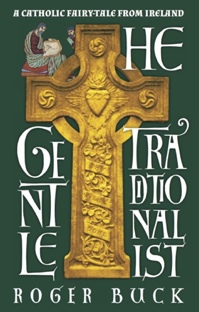
GT: I’ve been watching all this, for a long, long time … The ever-increasing murder and suicide rates … Or drugs, prostitution, domestic violence, homelessness . . .
These things would have shocked previous generations. But we accept them as “normal” now. And it’s not stopping—but growing. Yet no- one seems to be asking: where is all this headed in the future?.
You see, my friend, I’m not just looking at today. We need to consider the longer-term view: the world of 2100 or 2200, for example. Frankly, it scares me.
GPL: You and me, too.
GT: But there’s more. The growth curves of mental illness. And the growth curves of children taking drugs to combat mental illness . . .
All this is just scientifically measurable mental illness. What about other forms of illness? We see this explosion of sexual perversity, sadomasochism for example. It’s pathological. But you’re no longer allowed to say that, of course.
In the past, these things were seen as sicknesses of the soul. Now they’re normalised and accepted as an “alternative lifestyle”! It’s politically incorrect to call them “sick.” Soon it may be illegal to do so—what with legislation against “hate crimes” and the like […] We may be nearing the end of religious liberty. The secular metaphysic, the secular ethic, the secular elite—that small sliver of humanity—may soon have total power to crush Christian ethics. . . .
Moreover, the power of technology is boosting the secular metaphysic like never before. Never before has humanity been bombarded like this—round the clock. Television. Advertising. Pop songs. Jingles. Internet. iPods. And it’s going to get worse. Virtual reality is coming, no doubt virtual pornography . . . Challenges like never before . . .
Roger Buck, The Gentle Traditionalist, p. 157.
In my book, the Gentle Traditionalist, continues a little longer, speaking of technology, before concluding:
We’re all turning into machines in a world of technocracy. Everything’s becoming like steel. Steely efficiency. Steely ruthlessness. Steely cold.”
Something about the way he said steel, steely sliced into my heart […]
“All these things are interrelated. The intensification of neoliberal economics—Thatcherism, Reaganism, all that—is contingent on the general coarsening of moral sensitivity […]”
And with that, he buried his head in his hands and started weeping softly again. “2100” he said a couple of times. Then, “Steel, steel . . .” After that, we both fell silent.
Roger Buck, The Gentle Traditionalist, p. 158.
Dear friends, known and unknown, who read these lines with sympathy and understanding, it is now time I draw to a close.
But it occurs to me that I might leave you with two simple bulleted statements, which express the heart of what I am trying to say here:
- The little dialogue above features concerns which weighed gravely on the hearts of both Rudolf Steiner and Valentin Tomberg, both prophets in their own way.
- Beholding the grave of civilisation, Valentin Tomberg pointed to the only hope he saw: the Holy Church and her Sacraments.
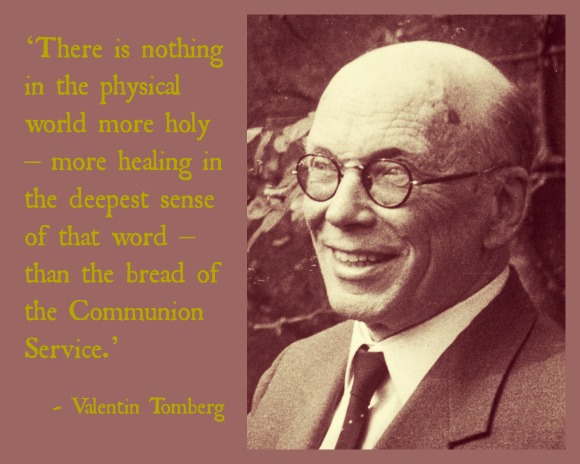

Foreword for Monarchy by Roger Buck
Buying Books at Amazon Through These Links Gives Us a Commission. This Supports Our Apostolate. Thank You if You Can Help Us Like This!

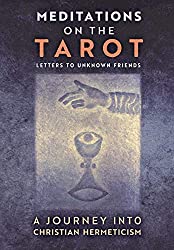
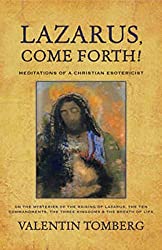

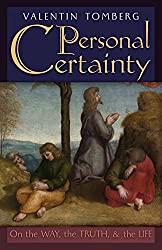



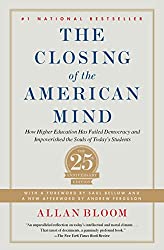




Comments
comments are currently closed
6 responses to “At the Grave of Civilisation: (Steiner, Tomberg and Modernity)”
[…] « Famished for Christendom At the Grave of Civilisation? (Steiner, Tomberg and Modernity) » […]
Your insights are a Godsend! And not only are they insights – they are discernments of the highest sort in order to extricate yourself and others from the magnificent beast of Anthroposophy! My call to Christ several years ago has led me on a long winding path that eventually led me to moving into a Camphill Community in Pennsylvania. With my propensity for the new age, mysticism, and love of immense theologies fueled by my degree and lifelong studies of philosophy, Anthroposophy’s lure was perfect and powerful. But quickly, being around others that called themselves “Anthroposophist” I realized their dogmatism was just as strong and even more virile than other marginalized Christian sects because they of course like them, know they have it right. But it wasn’t that they had it right, it was that they believed that Steiner had it right and they worshipped at his altar. In order to protect myself I had to make a demarcation and declare that I studied Steiner as a spiritual philosopher and that Anthroposophy was dead. In that time, as I lived in the Camphill Community I was miraculously led to the Catholic Church in a turn too hard for me to even believe and I’m still in the process of joining. And only a few weeks before I left the community I finally found Meditations on the Tarot and read with jaw dropped! I still to this day continue my “buffets” by the Devil and I go through long periods of studying Steiner’s thought will keeping Anthroposophy at bay. You mentioned megalomania of personality and Anthroposophy is of course an aggrandized attempt to objectify that which did not truly link to world evolution. That said, Steiner provides an invaluable change to the train of thoughts and course of life that many could end up leading and even though Tomberg rejects it he was still made better for having overcome it. Steiner looked into himself and the world in ways so utterly different that I greatly value the change in my thinking that has resulted by my study of him and with my flirtation with Anthroposophy. Nietzsche said that he much preferred the mistakes of great men than the accomplishments of ordinary men. Steiner was no ordinary man and his influence on those influenced by him is immense. To tune into this debate that you have brought to light here might be quietly the greatest happening in Christendom in the last 100 years and to some degree in its history. No system that recognizes Christ as the center of existence can come close to offering such a challenge and for those of us that can enter the heat of this battle we are made that much stronger for having survived it. It only makes sense that upon bodily death that Steiner became aware of his mistake and that he did indeed tell Tomberg to join the Catholic Church. God works in mysterious ways and perhaps we will see why there was this strange outgrowth of Anthroposophy just as we will see why we have had these strange growths of Mormonism, and even all of Protestantism for that fact. G.K. Chesterton brilliantly pointed out that Christianity is such a sparkling and powerful thing that it can take on amazing complex issues and just kind of wobble and bobble a bit before it rights itself in some magnificent way. As the altars unite we will someday see the wisdom in it all….thank you…
I was initially very excited by your idea to write a book on this matter, but I also had some revelations around such an effort. Anthroposophy is already dead and it only lives in highly weakened forms via Waldorf Schools and Biodynamics. Steiner often warned of its demise and one of the causes he directly diagnosed was the offshoots like Waldorf and Christian Community forgetting about “Mother Anthroposophy” and letting her die a slow death. Well, as he warned, it is happening. Anthroposophy as much as I wanted her at times to survive and personally tried to wake Anthroposophists up to how we were killing it, I realized it is mostly at this point only a silly sounding word that people use. A book highlighting this matter will appeal only to maybe a few hundred people subtle enough to understand this matter and that have personal experience with it. Yet, this is a highly esoteric matter that means a universe to the people struggling with it! And in God’s economy a book about such a matter is needed and very important as a record and testament against Anthroposophy. My guess is that there are probably only a few dozen people that deeply understand Anthroposophy that will convert to Catholicism in the course of several years meaning such a book has no audience, but I think the esoteric importance of this is beyond measure. Tomberg’s endorsement of Catholicism is staggering if we understand the depths from where he came. Anthroposophists pass it off that he was Russian and already had a propensity for it along with marrying a Catholic. Steiner brilliantly warned us of using such clichés and in our language and thinking as they shut us off from the deeper happenings. Tomberg’s conversion was anything by another mundane instance of conversion. When he declares that we are not to create “new altars” he opens those with ears to hear and eyes to see to the majesty of Catholicism and the greatest hope to save the decline of civilization. Tomberg cleared my vision to such a degree that its sobering effect is still hard for me to fathom. And even as I sit in a Catholic Church I feel over and over again that no one knows how important this all is as it always just seems a matter of course to them. Catholic people often don’t even believe that I want to convert to Catholicism and seemed confused by having an adult convert. They simply can’t see these great esoteric happenings and realizations that I’m aware of and understandably so and I of course cannot and do not try to explain it. Yet, how are we to enliven the Catholic Church if we cannot see and feel why it is alive? Most the world’s population just believes it’s the dinosaur that won’t die off and few seem to consider it the hope and future of humanity and the guardian of Christ! If we could understand, accept, imagine Steiner in purgatory telling Tomberg to join the Catholic Church we have just grasped one of the greatest esoteric happening since the birth of Christ and one of the most ringing endorsements there has ever been for the true position of the Catholic Church! A book that brings this to light could prove invaluable!
Gavin, having just given you a very small response elsewhere, I will continue, just a little bit here …
Re:
It is hard to know what else to say here, except ‘amen’.
Re:
I am deeply struck by how all this was moving in you, BEFORE encountering Tomberg. I find myself thinking that whilst many are in touch with dead husk of Anthroposophy and Steiner as he was before 1925, there are those who are different, because …
With that hint, my voice trails off.
Finally you are right that a book only dedicated to Tomberg vis-a-vis Anthroposophy would only reach a small audience.
I think I should point out that my upcoming big book has a rather different orientation, though of course it does speak to this issue as well.
But actually my book has much more on Blavatsky, Alice Bailey and the New Age than Anthroposophy.
It also goes very much into France, including the French Hermeticists, and I hope it can help facilitate awareness of why Tomberg wrote in FRENCH.
And there is a lot more on various aspects of Tomberg too in relation to the Western culture, both the Church and secular society.
Both explicitly and implicitly, the book is all to do with Tomberg.
But a more detailed study of Tomberg and Anthroposophy for a limited audience must wait. Still my mind is definitely turning to whether I can find time to devote a smaller volume to those very specific issues.
I am aware of the many other rich things you invoke, but must stop now, before I can say any more …
Hi Roger,
I’m enjoying your site. I’ve also recently read your book The Gentle Traditionalist (which I also enjoyed). I’m a student of Tomberg and I’m very interested in the in’s and out’s of his relationship to Catholicism, Orthodoxy, Tradition and Hermeticism. I’m interested in hearing more about your thoughts on these topics, especially since you seem to have had contact with his personal correspondence and other writings which are not so available in english. Is there anywhere that you have dealt with these topics further?
Also, I’m interested to hear more about Steiner’s Christology falling under the category of Nestorian heresy. Do you have more written concerning that?
All the Best,
Phillip
Thank you Phillip and while there is so much that might be said, I must be brief, as I am going offline for some time into silent retreat.
If you have seen the tag at this site, Valentin Tomberg, I imagine you will have seen what I have online about these profound matters.
There IS quite a lot more, I think, in my big book Cor Jesu Sacratissimum: From Secularism and the New Age to Christendom Renewed. But it is scattered and sometimes more implicit than explicit.
But so so much of that book is what Tomberg led me to, very much including the material there on Revolutionary and Counter Revolutionary France, which implicitly relates to why he chose to write in French and his legal-political theses arguing for Christendom of some kind as the only way to avert global catastrophe.
Of some kind, I stress. Tomberg’s concern with counter-revolution was not an argument for a pure and simple return to pre-revolutionary ancien regime structures, but was nevertheless every bit as radical. Calling for the need for Divine Law to be restored to Western civilisation! Yes much of my big book is oriented to that, implicitly as well as explicitly.
Truly I believe the whole of my big book is oriented in one way or another to these matters we speak of here, again, implicitly as well as explicitly.
Nonetheless, I do feel I have more I want to say regarding Tomberg – far more than I have yet been able to say. I am working on another book devoted more obviously to Tomberg’s legacy. Finding time is not easy – but I think I need to prioritise this project next year.
As for Nestorianism, well, I just meant in the basic sense that such emphasizes a distinction between the human and divine natures of the divine person, Jesus …
But I cannot easily do better than this now. God bless you, unknown friend …